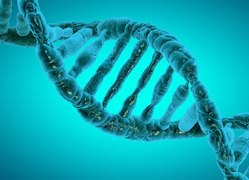Nature vs Nurture: Does Epigenetics Challenge Evolution?
/A new wrinkle in the traditional nature vs nurture debate – whether our behavior and personalities are influenced more by genetics or by our upbringing and environment – is the science of epigenetics. Epigenetics describes the mechanisms for switching individual genes on or off in the genome, which is an organism’s complete set of genetic instructions.
A controversial question is whether epigenetic changes can be inherited. According to Darwin’s 19th-century theory, evolution is governed entirely by heritable variation of what we now know as genes, a variation that usually results from mutation; any biological changes to the whole organism during its lifetime caused by environmental factors can’t be inherited. But recent evidence from studies on rodents suggests that epigenetic alterations can indeed be passed on to subsequent generations. If true, this implies that our genes record a memory of our lifestyle or behavior today that will form part of the genetic makeup of our grandchildren and great-grandchildren.
So was Darwin wrong? Is epigenetics an attack on science? At first blush, epigenetics is reminiscent of Lamarckism – the pre-Darwinian notion that acquired characteristics are heritable, promulgated by French naturalist Jean-Baptiste Lamarck. Lamarck’s most famous example was the giraffe, whose long neck was thought at the time to have come from generations of its ancestors stretching to reach foliage in high trees, with longer and longer necks then being inherited.
Darwin himself, when his proposal of natural selection as the evolutionary driving force was initially rejected, embraced Lamarckism as a possible alternative to natural selection. But the Lamarckian view was later discredited, as more and more evidence for natural selection accumulated, especially from molecular biology.
Nonetheless, the wheel appears to have turned back to Lamarck’s idea over the last 20 years. Several epidemiological studies have established an apparent link between 20th-century starvation and the current prevalence of obesity in the children and grandchildren of malnourished mothers. The most widely studied event is the Dutch Hunger Winter, the name given to a 6-month winter blockade of part of the Netherlands by the Germans toward the end of World War II. Survivors, who included Hollywood actress Audrey Hepburn, resorted to eating grass and tulip bulbs to stay alive.
The studies found that mothers who suffered malnutrition during early pregnancy gave birth to children who were more prone to obesity and schizophrenia than children of well-fed mothers. More unexpectedly, the same effects showed up in the grandchildren of the women who were malnourished during the first three months of their pregnancy. Similarly, an increased incidence of Type II diabetes has been discovered in adults whose pregnant mothers experienced starvation during the Ukrainian Famine of 1932-33 and the Great Chinese Famine of 1958-61.
All this data points to the transmission from generation to generation of biological effects caused by an individual’s own experiences. Further evidence for such epigenetic, Lamarckian-like changes comes from laboratory studies of agouti mice, so called because they carry the agouti gene that not only makes the rodents fat and yellow, but also renders them susceptible to cancer and diabetes. By simply altering a pregnant mother’s diet, researchers found they could effectively silence the agouti gene and produce offspring that were slender and brown, and no longer prone to cancer or diabetes
The modified mouse diet was rich in methyl donors, small molecules that attach themselves to the DNA string in the genome and switch off the troublesome gene, and are found in foods such as onions and beets. In addition to its DNA, any genome in fact contains an array of chemical markers and switches that constitute the instructions for the estimated 21,000 protein-coding genes in the genome. That is, the array is able to turn the expression of particular genes on or off.
However, the epigenome, as this array is called, can’t alter the genes themselves. A soldier who loses a limb in battle, for example, will not bear children with shortened arms or legs. And, while there’s limited evidence that epigenetic changes in humans can be transmitted between generations, such as the starvation studies described above, the possibility isn’t yet fully established and further research is needed.
One line of thought, for which an increasing amount of evidence exists in animals and plants, is that epigenetic change doesn’t come from experience or use – as in the case of Lamarck’s giraffe – but actually results from Darwinian natural selection. The idea is that in order to cope with an environmental threat or need, natural selection may choose the variation in the species that has an epigenome favoring the attachment to its DNA of a specific type of molecule such as a methyl donor, capable of expressing or silencing certain genes. In other words, epigenetic changes can exploit existing heritable genetic variation, and so are passed on.
Is this explanation correct or, as creationists would like to think, did Darwin’s theory of evolution get it wrong? Time will tell.










